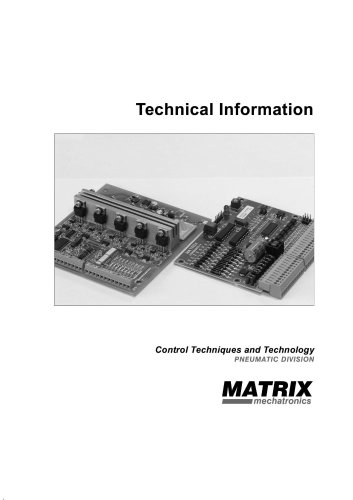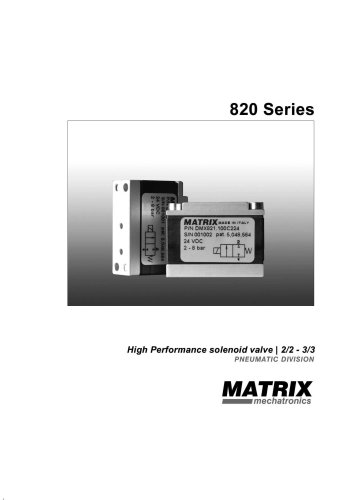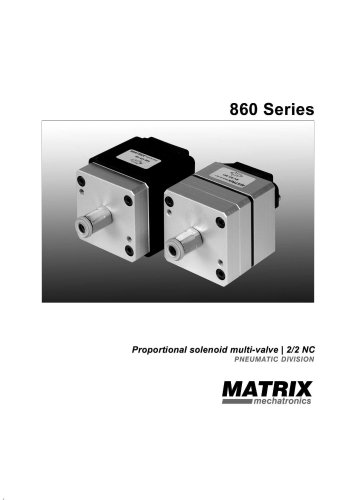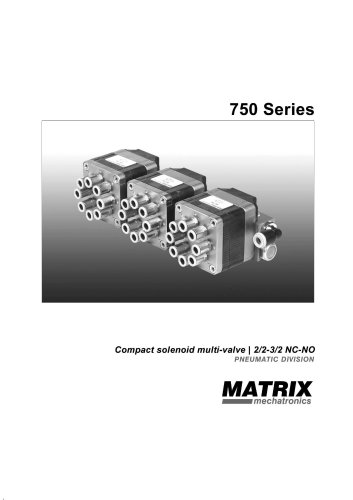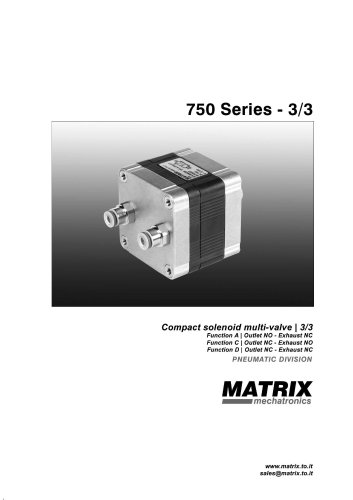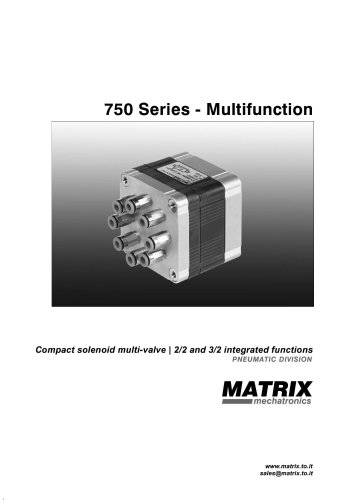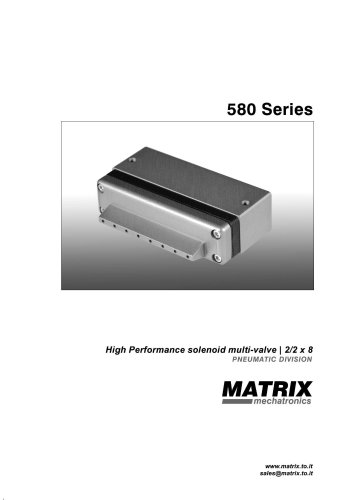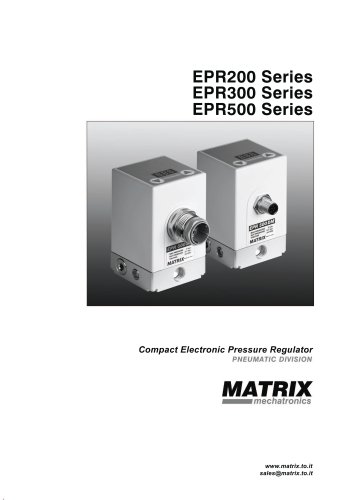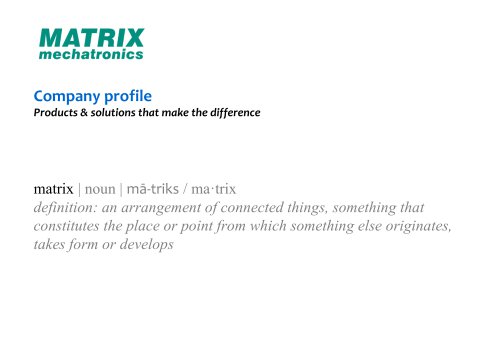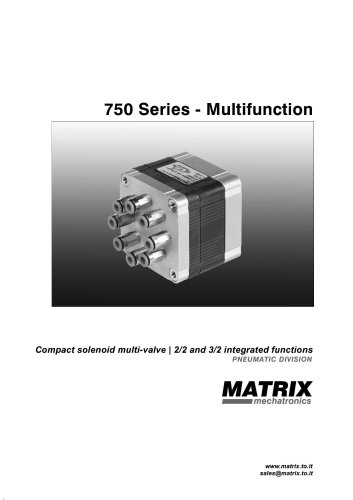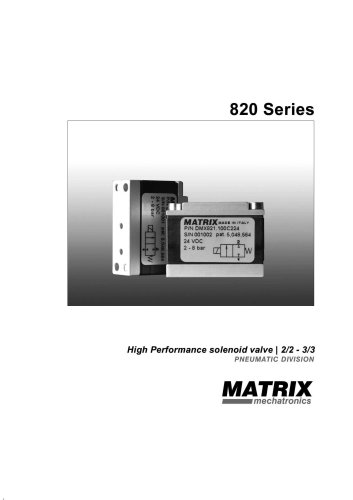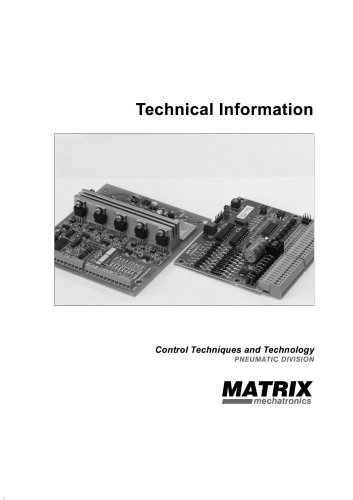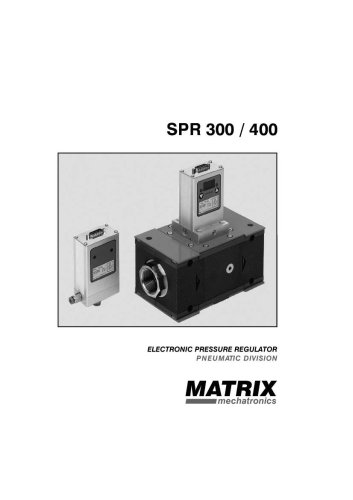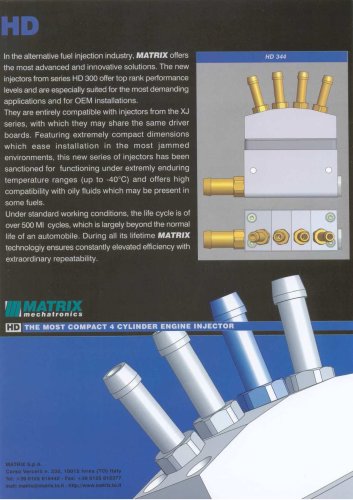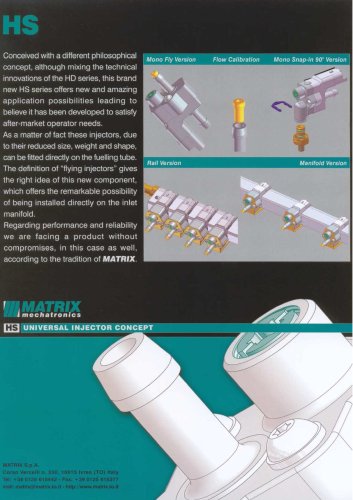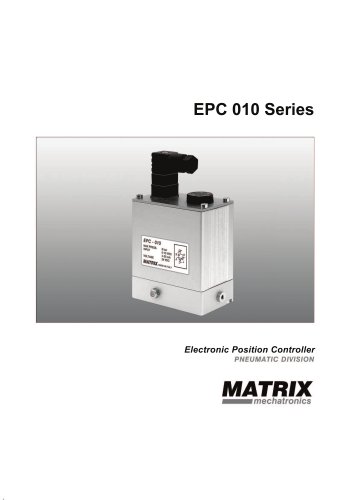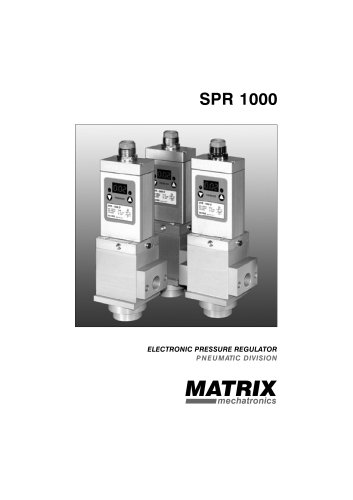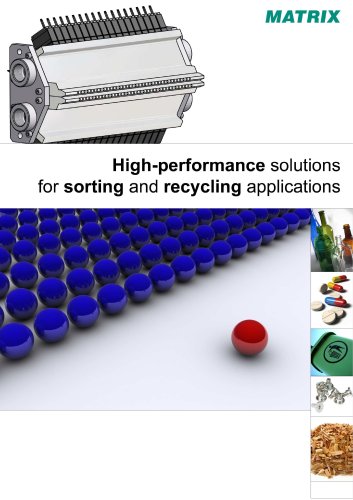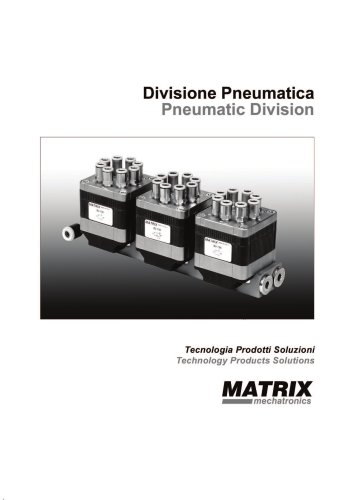 Website:
MATRIX mechatronics
Website:
MATRIX mechatronics
Catalog excerpts

Control Techniques and Technology PNEUMATIC DIVISION
Open the catalog to page 1
Flow control techniques Pneumatic solenoid valves may be subdivided into two categories: digital on/off solenoid valves and proportional solenoid valves. Digital solenoid valves combine their open-closed position with an electric on-off control. Proportional solenoid valves combine a particular position (between open and closed) in a proportional way with a tension or variable-current control device. The evolution of technology led to the development of new flow control techniques, which allow the use of digital components instead of proportional ones. These techniques, started from...
Open the catalog to page 2
TECHNICAL INFORMATION PNM Technique PNM (Pulse Number Modulation) technique is based on the features of multiple shutter valves of 750 and 850 Series. It consists of the generation of on-off control groups. This means that a PNM control (variable from 0 to n), applied to an n shutter group of equal flow, implies a proportional variation to n of the passing flow. The flow results as: Q = Qn x n where Qn is the rate of flow of only a shutter. The rate of flow may assume n values included between zero flow and maximum flow. When n = 8 the achievable values are just 8. Variation proportional to...
Open the catalog to page 3
Speed - up Control technique The speed-up control technique is used for applications where the dynamic performance (response time and operation frequency of the valves) is fundamental. It consists of generating a double level of control, either in current or in tension. Said control is able to supply the solenoid valve a high breakaway energy to open the valve quickly. Subsequently, by lowering the control level, it maintains the valve open. All the models in the present catalogue are available in two versions for speed-up control. They are respectively named: XX version for...
Open the catalog to page 4
ON - OFF control Technique with double level of tension One of the peculiar characteristics of Matrix technology is the exponential increment of the energy efficiency as regards the magnetic system during either the opening phase (NC, Function) or closing phase (NO, Normally Open, Function) of the solenoid valve (Picture 1). Said characteristics derive from the progressive reduction of the magnetic gap, reaching zero-value when the solenoid valve is completely open (NC Function) or completely closed (NO Function) (See Picture 3 at "Matrix technology" paragraph). Therefore, the maintenance...
Open the catalog to page 5
Matrix Technology Matrix pneumatic technology uses two highly innovative principles: • the absence of internal friction during the shutter opening and closing phases; • the modular architecture, allowing the assembly of several shutters in a sole body. The traditional technologies, employed in solenoid valves, both slide and shuttered valves, suffer in different ways, because of the inertial forces of their mechanical components, thermal exchanges, trimmings frictions, high temperatures, caused by the electric windings. The absence of friction (Picture 3), combined with the reduction of the...
Open the catalog to page 6
Since the higher are readiness and precision of a system, the higher results the control speed (frequency). Consequently, the PWM control technique requires unusual technical features for the elements to be controlled. Just like computers, where their global speed is due to the operating rate (frequency) of the interior clock. Namely, said technical features are characterized by: • extremely reduced response times; • very long operation life; • insensibility to work at high speed. The importance of the response times is fundamental. Actually, a short response time allows to obtain very...
Open the catalog to page 7
Rules for use not in accordance with the instructions The general characteristics of all models and their condition of use are referred to in the catalogue pages. When a correct condition of use may be guaranteed, it is necessary to follow the undermentioned instructions. The nonobservance of said instructions may generate a quick decay of the original characteristics of the product or irreversible damages, which may compromise the its correct working. 1. Use of non stabilized tensions (except speed-up models) Tension valves higher than limits, indicated in the use conditions may generate...
Open the catalog to page 8All MATRIX mechatronics catalogs and technical brochures
-
Sorting Applications
4 Pages

